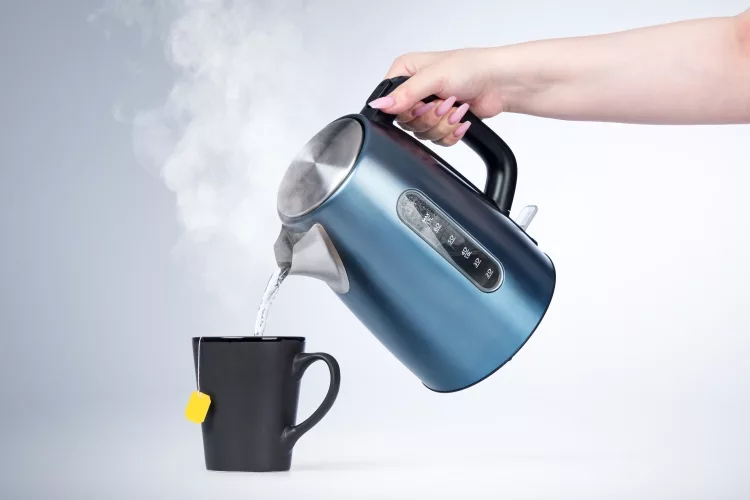How to Clean Fellow Kettle
by Terry R.
Cleaning a kettle is not an easy task. There are many different materials that can be found in your kitchen, and each one requires its own unique cleaning process. These materials include stainless steel, ceramic, plastic and glass. The most important thing you should keep in mind when trying to clean any of these items is to stay away from using soap on the surface of the material since this will leave residue behind which can change how it looks or smell over time.
The instructions for cleaning your Fellow kettle are pretty straightforward, but there are some things you should know before attempting to clean it. You'll need a natural sponge or dishcloth, baking soda, distilled white vinegar and water.
First fill the kettle with water and add equal parts of the three ingredients. The mixture needs to sit in the kettle for at least 30 minutes before proceeding. Next take a damp cloth or scrubbing pad which is not abrasive on any surface that may be sensitive, then rub all surfaces that have accumulated residue on them until they're clean again.

Finally rinse out the inside of your Fellow Kettle with cold tap water while giving it an initial quick wash with soap if necessary followed by another thorough rinse with cold tap-water.
- Fill the kettle with a mixture of water and vinegar
- Bring the mixture to a boil before turning off the heat
- Boil for 5 minutes, then turn off the heat and let it cool down
- Pour out all of the liquid from inside of your fellow kettle, then rinse it out thoroughly with hot water
- Add 1 cup of white vinegar to boiling water in order to clean any remaining residue that may be left on your fellow kettle's inner walls
- Rinse out your fellow kettle thoroughly after letting it sit for 5-10 minutes so you can enjoy a fresh smelling home without having to worry about cleaning up after yourself.
Is limescale in kettle harmful?

Limescale is a hard and crusty film that builds up on the inside of your kettle. It's not something you want to find, as it can lead to corrosion and health issues like kidney stones or bladder infections. You may be wondering what causes limescale in the first place? The answer lies in how water reacts with certain minerals contained in natural tap water such as calcium and magnesium. These minerals react with dissolved soap residue (which is left over from washing dishes) to form a layer of limescale which gradually thickens into an encrustation that can't be removed by simple scrubbing or boiling alone.
If you worry about the white film that forms on your kettle's inside surfaces, then this article might be for you. The first thing to note is that limescale in a kettle does not actually pose any health risks. However, it does affect how well your appliance performs and can lead to a messy kitchen.

It also makes cleaning much more difficult as those pesky particles cling onto anything they come into contact with - including scrubbing brushes! In this blog post we'll be exploring the different types of kettles available and their suitability for various needs. This way you can find one suited to your home and lifestyle without having to deal with limescale.
What is the brown stuff in my kettle?

The water that comes out of your kitchen faucet is usually brown. This coloration is caused by the presence of dissolved iron in the water, which can come from a number of different sources, including natural mineral deposits or man-made contaminants. The darker the liquid looks, the more likely it has been exposed to air and rusting processes have taken place. But if you are seeing this coloration coming from your kettle's spout after boiling water for tea.
If you're anything like me, you've had the experience of opening your kettle to find that brown goop on the bottom. You might be wondering if it's some sort of mold or fungus. It turns out it's actually sugar! The heat from boiling water separates sugar molecules and they attach themselves to metal surfaces like your kettles. This post will show how this happens, what happens when you pour hot water into a kettle with sugar residue on it, and how to prevent this problem in the future.

Given that you're reading this article, it's safe to assume that you've been in the unfortunate situation of not knowing what the brown stuff is in your kettle. The brown stuff might be a lack of cleanliness or a sign of rust developing on your kettle. It could also be dirt or some other type of debris from water droplets left behind after boiling water.
Whatever the case may be, there are ways to remove and prevent this brown muck from ever happening again! In order to avoid any confusion about what is going on with your kettle, I'll give some explanations for how it can get dirty and then tell you how to get rid of it so that you never have to go through this ordeal again.
About Terry R.
Hello everyone, Nice to meet you!I'm Terry. The man behind the sweet revelations blog. I'm a father of two energetic kids. I grew up in New York. I love to read books. I like to spend most of the time with my family and friends. I used to learn new things and wish to share my knowledge with others.
Thoughts on "How to Clean Fellow Kettle"
 |
 |
 |
 |
Kitchen - Outdoor